Treble and Bass Clef Notes Explained: What Are Clefs in Music?

In music notation, clef symbols help us bring written music to life. Clefs are arguably the most important symbols in music, without them we’d have no idea which notes we are supposed to play!
What are the Clefs in Music?
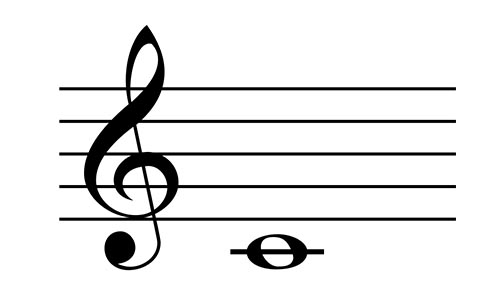
Clefs are symbols used in musical notation to tell musicians which notes are represented by the lines and spaces on the music staff.
The music staff always contains five lines and four spaces, each representing a different note in the musical alphabet.
They are fundamental to written music and an important part of learning music theory.
Because various instruments have different note ranges, clef symbols are used to clarify which frequency register and therefore which notes the part is played in.
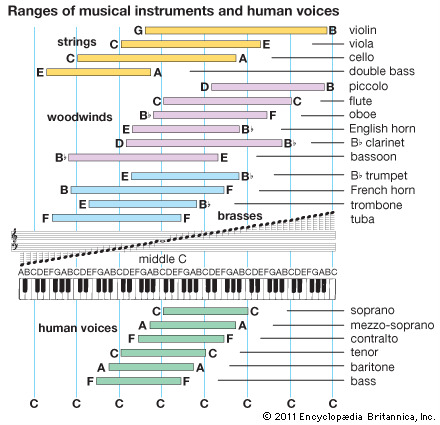
From high to low these clefs are treble clef, alto clef, tenor clef, and bass clef.
Treble clef and bass clef are the most frequently used clefs, so we’ll learn about those first!
What Is a Treble Clef?
Treble clef is used to notate musical notes above middle C.
Visually, the treble clef is an embellished “G”, with the swirl on the bottom circling the line for the note “G” on the staff. For this reason, it is sometimes called the G clef.
Instruments that read in treble clef include guitar, violin, and trumpet. On piano, the treble clef is typically used for the notes played by the right hand.
Historical evolution of treble clef

What Is a Bass Clef?
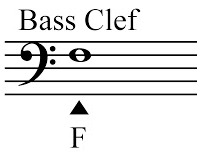
Like the treble clef, the bass clef is shaped like the letter F. The two dots to the right enclose the staff line for the note “F”, giving it the nickname of “F clef”.
This F note is the F below middle C, and as such, the bass clef is used to notate pitches below middle C on the piano.
Instruments that read in bass clef include bass guitars, double bass, timpani, and trombone (surprisingly).
Other instruments that read music in bass clef are bassoon, tuba, and synth bass.
On the piano, the bass clef is used to notate parts played by the left hand. Lower register accompanying chords and arpeggios are frequently notated with bass clef on the piano’s grand staff.
Historical evolution of bass clef:

What is the Difference Between Treble and Bass Clef?
The treble clef and the bass clef are two different ways to write music that show different ranges of pitch. The range of notes that each clef represents is the main difference between treble and bass clef.
How to Read Treble Clef
Even though becoming a proficient music reader takes time and practice, learning about clefs is fairly simple.
Each line and space represents one note. To clarify, musicologists use the word “tone” to refer to a musical pitch or sound (being played) and the term “note” to refer to the written representation of that sound on a musical score. For the purpose of simplicity, we’ll simply use “note” throughout to refer to both the sound and the visual.
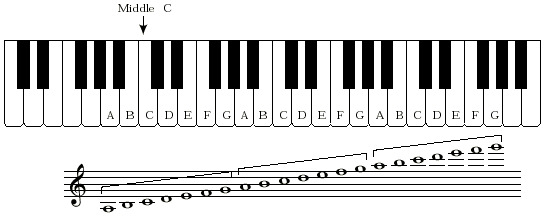
Treble Clef Lines
In treble clef, the first line is for the note “E4”.
The second line is for the note “G4”.
The third line is for the note “B4”
The fourth line is for the note “D5”.
The fifth line is for the note “F5”.
Treble Clef Spaces
The first space is for the note “F4”.
The second space is for the note “A4”.
The third space is for the note “C5”.
The fourth space is for the note “E5”.
The numbers such as 4 and 5 are used to reference which octave the notes are sounded in. The number 4 is used for the octave beginning with middle C, the number 5 is used for the octave above (beginning on the 3rd space of the staff).
If we need to notate notes above or below the staff we use ledger lines. Ledger lines are added lines and spaces which let us reach into another clef without actually changing the clef symbol or cluttering the score.
You may have heard the helpful mnemonic phrases “Every Good Boy Does Fine” and “FACE” to help remember the names of the notes on the lines and spaces of the treble clef.
Moving down the treble clef from “G” we have “Good Friends Enjoy Dogs Closely”.
Treble Clef Ledger Lines Below
There is just one ledger line separating the treble and bass clefs, which is middle “C” or “C4”.
The space below the first ledger line beneath the staff is for the note “B3”, which begins moving into the bass clef.
The second ledger line below the staff is for “G3”. This gets close to the bottom range for instruments like guitar in standard tuning.
Treble Clef Ledger Lines Above
The first ledger line above the treble clef is “A5”.
The second ledger line above the treble clef marks the start of a third octave with “C6”.
Additional notes can fill the spaces between ledger lines as well.
The space between the top of the staff and the first ledger line is for the note “G5”.
The space between the first ledger line and the second ledger line is for the note “B5”.
Essentially, ledger lines are just a continuation of the staff. They only appear as a place to write notes that require them as short, detached lines.
How to Read Bass Clef
Reading music on the bass clef is the same process as reading music on the treble clef, with one exception… the notes represented by each line and space.
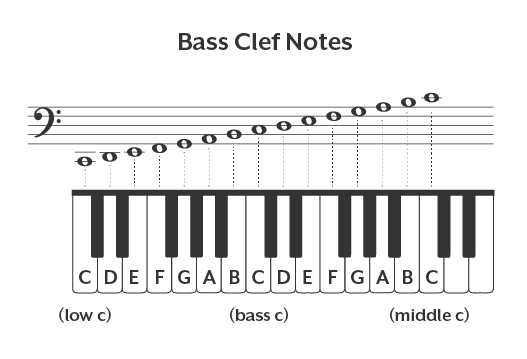
Bass Clef Lines
In bass clef, the first line is for the note “G2”.
The second line is for the note “B2”.
The third line is for the note “D3”
The fourth line is for the note “F3”.
The fifth line is for the note “A3”.
Bass Clef Spaces
The first space is for the note “A2”.
The second space is for the note “C3”. This is the “C” note one octave below middle C.
The third space is for the note “E3”.
The fourth space is for the note “G3”.
Bass Clef Ledger Lines Below
Notes below the staff on bass clef begin dropping toward the 1 octave. These notes border on sub-bass range for instruments like 808s and Moog synths.
The space below the bottom line of the staff is for the note “F2”.
The first ledger line below the bass clef staff is for the note “E2”, which is the bottom most note on the low string of a standard-tuned bass guitar.
The second ledger line below the staff is for “C2”, two full octaves below middle C.
The space between the first and second ledger lines is for the note “D2”.
Bass Clef Ledger Lines Above
The first ledger line above the bass clef is “C4”, which is middle C. Again, this ledger line is the space separating the treble clef and the bass clef. Any more ledger lines begin movement into the lower range of the treble clef.
The second ledger line above the bass clef is “E4”, the bottom most line of the treble clef.
The space between the top of the staff and the first ledger line is for the note “B4”.
The space between the first ledger line and the second ledger line is for the note “D4”. This is the D note found just below the start of the first line on the treble clef.
Similarly to the treble clef, the bass clef also has several mnemonic phrases to help us recall which notes are assigned to which lines and spaces with ease.
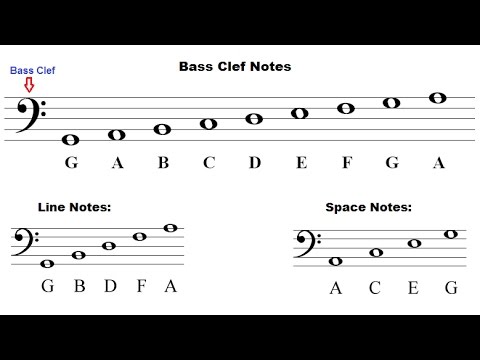
For the lines in bass clef we have, “Good Boys Do Fine Always”.
A cheekier mnemonic phrase to help us remember the lines on the bass clef is “Great Britain Doesn’t Fight America” (so long as your music was written after 1783… and not between the years of 1812 and 1815… ermm sorry Beethoven’s 7th.
To remember the names of the spaces in bass clef, we can use the phrase, “All Cows Eat Grass”. If that’s too much, “ACE + G” works too!
Accidentals
Traditionally, a song’s musical key is indicated with a key signature next to the clef and time signature. This tells us which notes in the piece are raised (sharp #) or lowered (flat ♭).
These sharp and flat notes occupy the black keys on the piano keyboard. They’re almost like notes in-between notes, and don’t require their own lines or spaces.
In the absence of a key signature, or if the piece contains accidentals from outside of the key signature, the # or ♭ sign can be added to the left-hand side of the note that corresponds to the same letter name.
In other words, notes like “B♭” or “D#” don’t need their own lines and spaces on the staff, we need simply add the correct accidental next to the note bubble on the correct line or space.
The Grand Staff
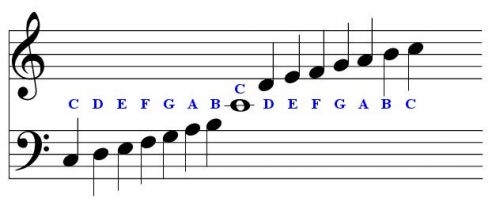
The grand staff is a compound staff typically used by the piano to score music played across a wide sonic register. The piano typically has 88 keys, which span seven octaves in whole or in part. Therefore, having a suitable canvas to notate for piano was a must.
The grand staff is also important because it helps us to visualize how treble and bass clef fit together!
This bears repeating, because I for some reason couldn’t grasp this for a few weeks in my first highschool theory class.
The treble and bass clefs are separated by only one ledger line between them, which is the note middle C (C4) on the piano.
Visually, this makes more sense and helps to unify and connect the two clefs.
Other Clefs in Music Notation
Now that we’ve learned clef basics and understand the treble and bass clefs, we can take a closer look at two other musical clefs; alto and tenor.
Three “sub” clefs of the treble and bass bracket are soprano, alto, and tenor.
All three clefs use a symbol that resembles an ornamental “C”, with the indentation always pointing at middle C or “C4”.
What differentiates these three clefs is exactly where they are positioned on the staff.
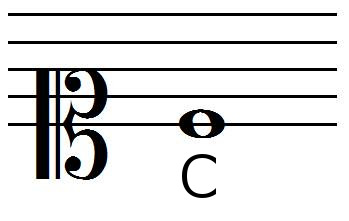
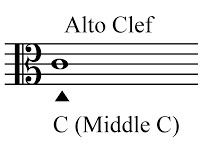
Alto clef is used by a variety of European chamber instruments like mandola (lower pitched mandolin), viola, viola d'amore, viola da gamba, and alto trombone. Many of these aren’t found outside of specific historical applications these days, with the exception of the viola, which is still a critical component of the string quartet, and reads in the lovely alto clef.
Alto clef places middle C smack dab on the middle line of the staff, allowing for space above and below C4.
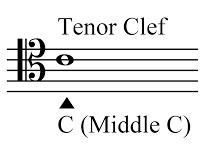
The tenor clef can be used by the cello, although cellists still use bass clef more often than not.
8va Explained
Some instruments sound higher than they are written on the staff. It’s worth noting that an instrument like the piccolo, while notated using the treble clef, actually sounds one whole octave higher than the notes are written.
Alternatively, instruments with wide note ranges can use an “8va” marking above the staff to indicate that the notes written should be played one octave higher than written.
This is done to avoid excessive use of multiple ledger lines when writing high register passages for instruments like guitar, which can have a range greater than two entire octaves above middle C.
Clefs are an often overlooked foundational building block of what makes written music work. Which clef does your instrument read in? Let us know in the comments and keep training those ears!
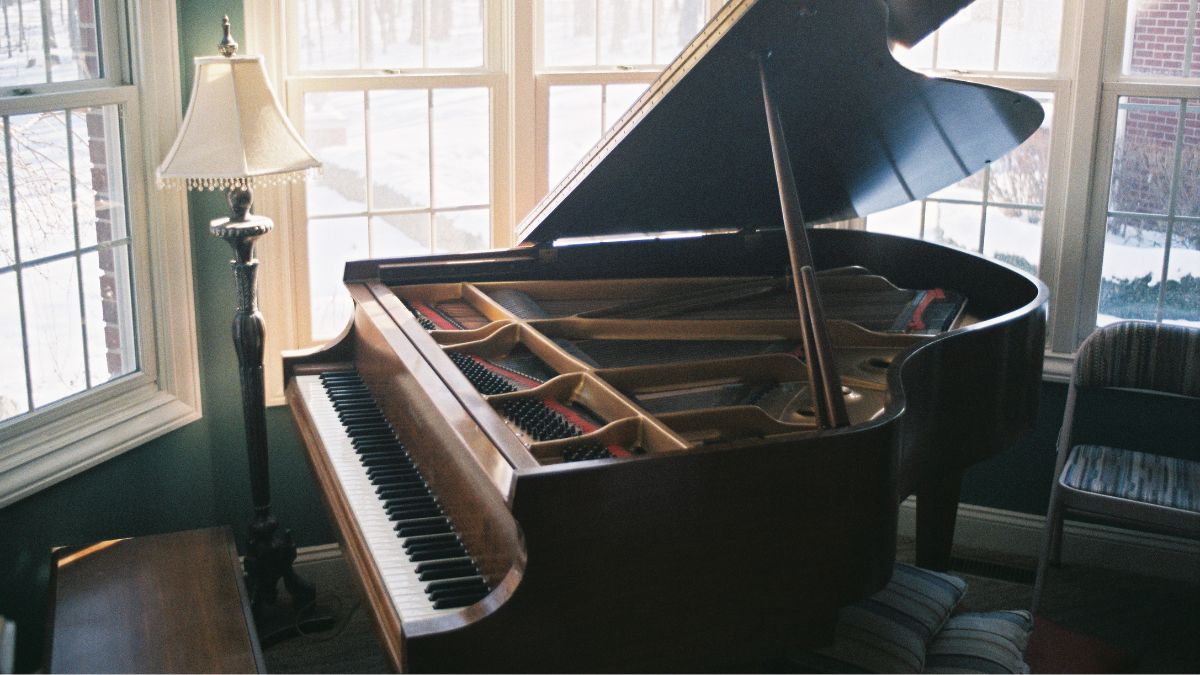

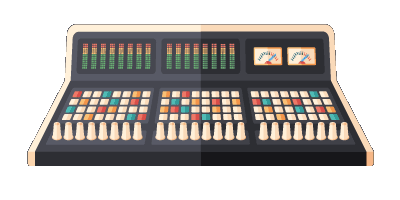
Comments:
Jun 21, 2023
May 27, 2023
May 25, 2023
Login to comment on this post